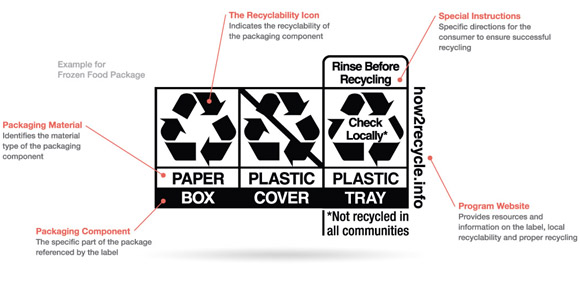Package Labeling & Design
Variation in recycling programs, unclear labeling and false recyclability claims can make proper recycling of packaging materials a challenge for consumers. Inaccurate claims of recyclability may also create a liability for manufacturers as perception of green washing can degrade their brand and negate good intentions.
StopWaste Guide to Environmental Claims on Packaging
StopWaste’s Guide to Environmental Claims on Packaging is designed to help Alameda County businesses comply with FCC requirements governing environmental claims on packaging. It also provides more information and recommendations for using the How2Recycle label. Visit the Guide.
How2Recycle Label
The Sustainable Packaging Coalition created the How2Recycle Label—a voluntary, standardized labeling system that clearly communicates recycling instructions to the U.S. public. StopWaste is offering funding to cover licensing costs for Alameda County businesses that adopt How2Recycle.

Why should my business use the label?
The How2Recycle Label is in alignment with the Federal Trade Commission’s guidelines on green claims (FTC Green Guides). This means that companies properly using the label are in compliance with the guidelines regarding recyclability claims. Use of the label also signals a company’s sustainable packaging efforts to consumers.
Who is currently using the label?
The How2Recycle Label is fast becoming the standard for package recycling labeling. Dozens of companies are now using the How2Recycle Label on millions of packages, including Target, General Mills, Seventh Generation, Kellogg’s, Clorox and ConAgra Foods. In Alameda County, Annie’s Foods, Plum Organics, and Clorox use the label.
How much does it cost?
The cost for licensing the use of the How2Recycle Label depends on company size, with annual fees range from $2,000 to $6,000.